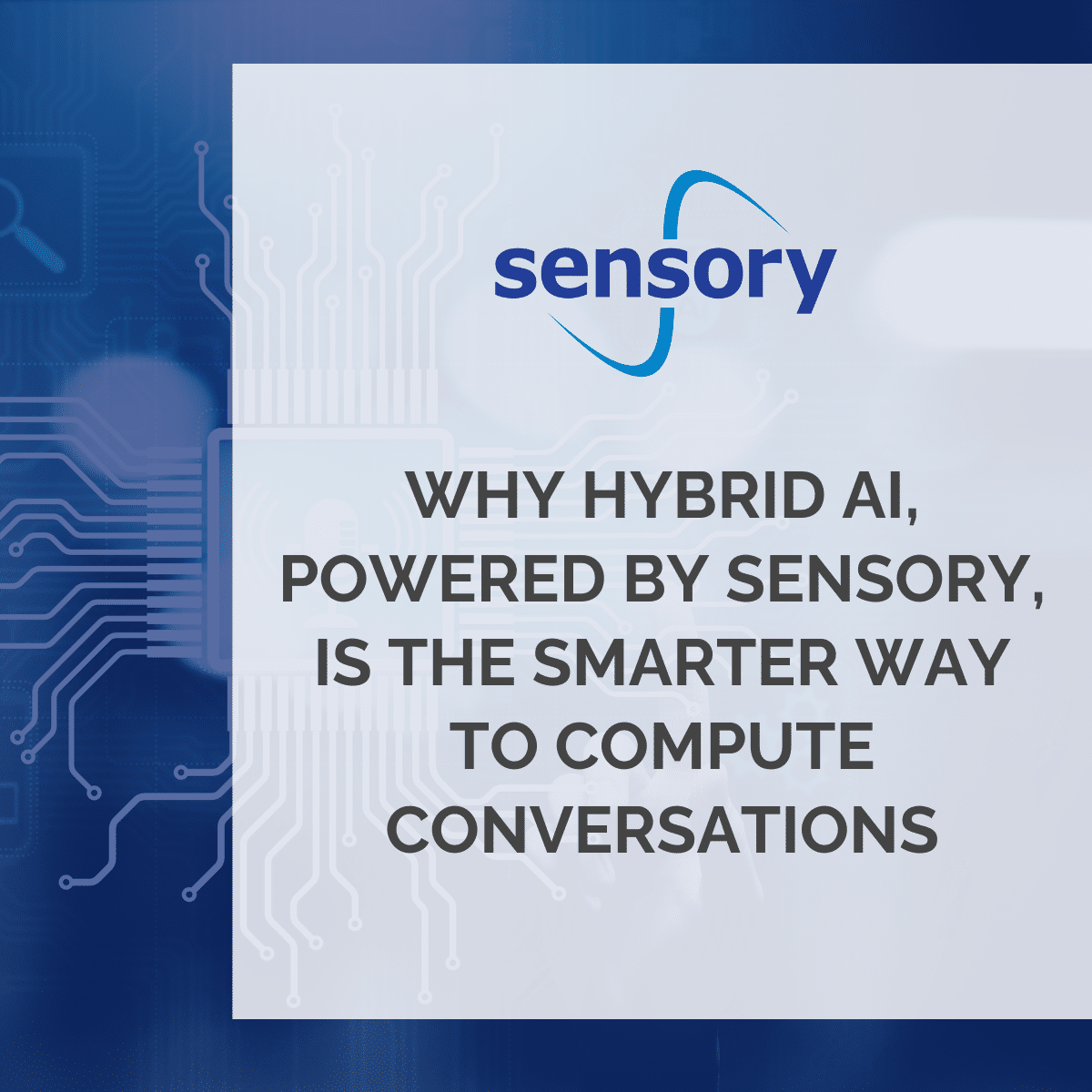A recent article spotlighted how seemingly harmless words like “please” and “thank you” are costing cloud AI providers, like OpenAI, tens of millions in energy expenses. Why? Because every extra word processed by cloud-only Large Language Models (LLMs) adds bandwidth, GPU cycles, and electricity use. The takeaway: natural language interactions have a hidden financial and environmental cost.
But what if you didn’t have to sacrifice natural, human-like conversations to cut costs? Sensory’s On-Device Voice Tech + Cloud LLM champions a smarter, hybrid approach. Instead of sending raw audio to the cloud, the process starts on the device itself.
Rethinking Voice AI: Hybrid Over Cloud-Only
Cloud-based voice AI involves two major steps:
- Speech-to-Text (STT) in the cloud
- LLM processing for understanding and response
This approach results in:
- High bandwidth use from streaming raw audio
- Expensive STT processing in the cloud
- Token-heavy LLM costs, especially when users speak naturally
The result? Higher latency, increased operational costs, and a larger carbon footprint.
The Hybrid Advantage: On-Device + Cloud
Sensory’s hybrid architecture reimagines this workflow:
- On-device STT: Using Sensory’s efficient neural networks, voice is transcribed locally—including polite or filler phrases.
- Immediate responses: Common phrases like “Thank you” can trigger on-device responses, skipping the cloud entirely.
- Compact transmission: Only lightweight text is sent to the cloud, not bulky audio files.
- Cloud LLM for complex tasks: The cloud handles only what it’s best at—generative tasks, not basic transcription.
The Benefits Stack Up
- Lower Bandwidth: Text is vastly smaller than audio—reducing data transfer and cloud costs.
- No Cloud STT Costs: STT happens on-device, eliminating that cloud expense.
- Faster Responses: Local processing and smaller data packets reduce latency.
- Better Privacy: Raw voice never leaves the device—just anonymized text.
- Natural Speech Welcome: Keyword spotting handles politeness locally, so users can speak freely.
Why This Matters
For product teams and brands, the hybrid model means:
- Cost-effective scalability without sacrificing quality
- Superior user experience with faster, more natural interactions
- Sustainability gains through reduced energy usage
- Competitive differentiation with better privacy and performance
Conclusion: Let Users Be Polite
This isn’t about cutting corners on user experience—it’s about cutting inefficiency. Cloud-only models are hitting their limits. With hybrid voice AI, you get the best of both worlds: responsive, natural conversations powered by Sensory’s on-device tech and cloud LLMs where needed.
Let users say “please” and “thank you.” With hybrid voice AI, you can afford to be polite—literally.
